When it comes to dental procedures, the conversation often leads to the topic of bone graft and implant. Patients frequently inquire about the pain levels associated with these treatments, as both can be essential steps in restoring oral health. Understanding the nuances of bone grafting and its relationship to dental implants can help patients gain a clearer picture of what to expect.
Introduction to bone grafting
Bone grafting has emerged as a pivotal surgical approach in dentistry and orthopedics alike. It not only plays a critical role in healing but also offers solutions for conditions that may otherwise lead to further complications or functional impairments.
Definition and purpose of bone grafting
Bone grafting is defined as a surgical procedure in which bone tissue is transplanted from one site to another or replaced with synthetic materials. The primary goal is to promote healing and regeneration of bone in areas that are damaged or missing. Whether due to trauma, disease, congenital defects, or even after tumor removal, bone grafting serves as a fundamental treatment approach.
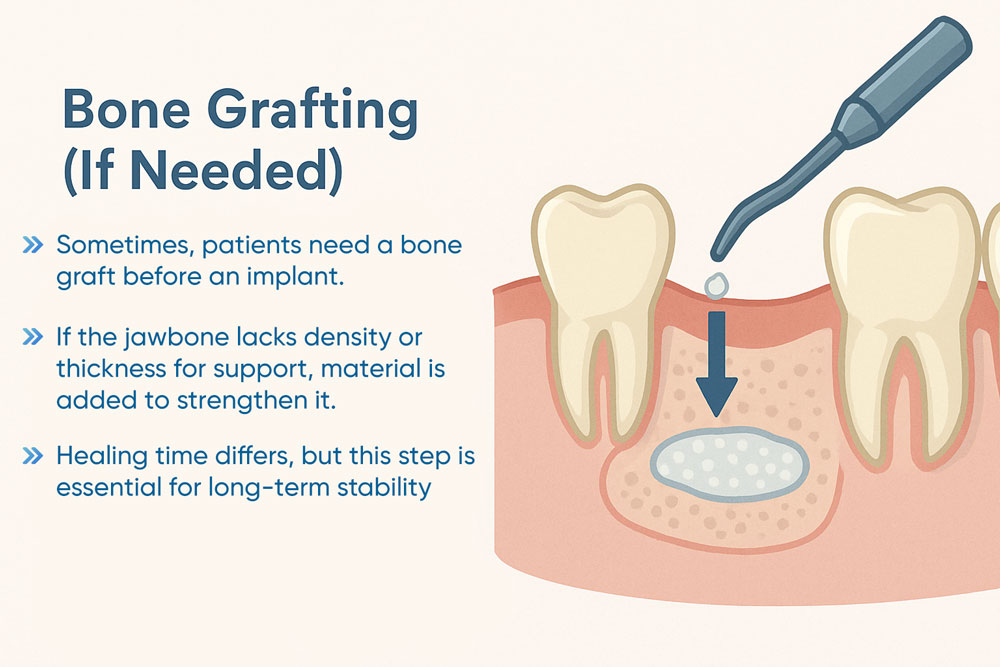
The purpose of this technique extends beyond mere stabilization; it aims to restore anatomical integrity and functionality of bones, enabling patients to regain their quality of life. Furthermore, bone grafts provide structural support, which is especially vital when placing dental implants, as the success of these implants heavily relies on adequate bone density and strength.
Types of bone grafts
Bone grafts can be classified broadly into three categories based on their origin: autografts, allografts, and synthetic bone grafts. Each type comes with its own set of advantages, disadvantages, and specific applications.
Autografts involve harvesting bone from the patient’s own body, making them highly effective but also necessitating two surgical sites. Allografts utilize human donor bone, effectively addressing volume needs without the complications of donor site morbidity. Synthetic bone grafts offer an innovative solution with engineered materials designed to mimic natural bone’s properties, catering to various surgical requirements.
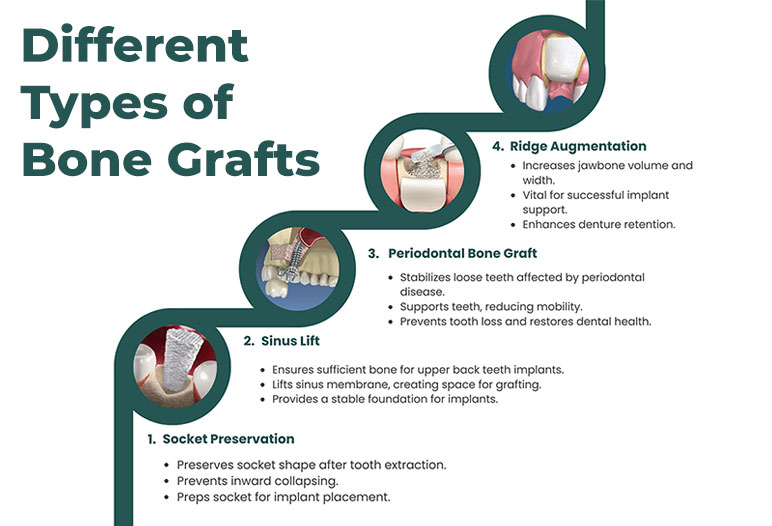
Applications of bone grafting in medicine
The applications of bone grafting are diverse and span various medical fields, underscoring its significance. In orthopedics, it is instrumental in repairing complex fractures where significant bone loss occurs. This application not only facilitates healing but also enhances the overall stability of the area.
In dentistry, specifically regarding dental implants, bone grafting is imperative for creating a robust foundation for artificial teeth. Similarly, craniofacial reconstruction often requires bone grafts to restore facial aesthetics and function following trauma or congenital disabilities. In spinal surgery, grafts stabilize vertebrae during fusion procedures, thereby alleviating pain and restoring mobility.
The bone grafting procedure
Understanding the bone grafting procedure is crucial for patients preparing for such surgeries. The steps involved can vary based on the type of graft used and the specific surgical objectives, but key phases remain consistent across procedures.
Pre-Operative preparations
Before undergoing a bone grafting procedure, extensive pre-operative preparations are essential. This phase allows the healthcare team to assess the patient’s suitability for the surgery, ensuring optimal outcomes.
A thorough medical history and physical examination will be conducted by the surgeon to identify any potential risks, allergies, or underlying conditions that could impact the procedure. Additionally, imaging studies such as X-rays or MRI scans help in assessing the extent of damage and planning the surgical approach, allowing for a tailored corrective strategy.
Blood tests may also be performed to check for infections or other health issues that could increase surgical risks. Lastly, a detailed discussion regarding anesthesia options and procedural expectations aims to empower patients, providing clarity and reducing anxiety.
Step-by-step overview of the procedure
The bone grafting procedure follows a systematic progression aimed at minimizing discomfort while maximizing effectiveness.
Initially, the patient is administered anesthesia, which can be general or local depending on the nature of the surgery. After ensuring the patient is comfortable, a surgical incision is made to expose the affected bone area. The surgeon carefully removes any damaged tissue to prepare the site for the graft.
Next, the bone graft—whether sourced from the patient (autograft), from a donor (allograft), or a synthetic material—is positioned into the defect. Additional measures such as membranes or growth factors may be employed to enhance healing. Once the graft is secured, the surgical site is closed using stitches or staples, followed by sterile dressing application to protect against infection.
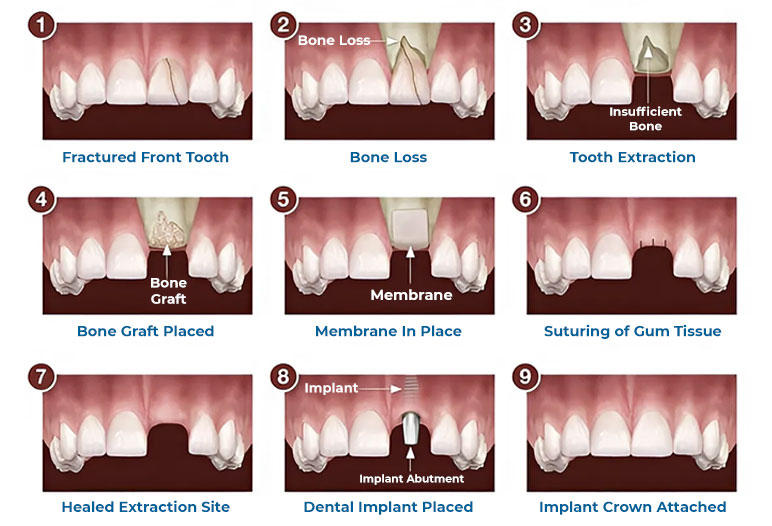
Post-operative care and recovery
Post-operative care plays a crucial role in optimizing recovery and ensuring the success of the graft. Pain management protocols typically include medications to mitigate discomfort and inflammation.
Wound care requires monitoring for signs of infection, such as excessive swelling or discharge. Regular dressing changes are essential to maintain a clean environment for healing. Depending on the location of the graft, immobilization through casts or braces may be necessary to restrict movement and facilitate healing.
Physical therapy can be an integral part of rehabilitation, aimed at restoring range of motion, muscle strength, and overall function post-surgery. Follow-up appointments with the surgeon are critical for assessing recovery progress and addressing any complications that might arise.
Types of bone grafts
Each type of bone graft has unique characteristics that affect its use and efficacy in specific situations. Understanding these differences can guide both surgeons and patients in making informed decisions regarding treatment.
Autografts: Advantages and Disadvantages
Autografts are often regarded as the gold standard due to their high compatibility and superior osteoinductive properties. Harvested from the patient’s body, they boast minimal risk of rejection and typically yield the best long-term results.
However, there are notable drawbacks. The necessity of a second surgical site can lead to increased overall surgical time and risk of complications like infection or bleeding. Moreover, the quantity of bone available for harvest is limited, potentially restricting their application in cases requiring significant volume.
Despite these limitations, many surgeons prefer autografts because they naturally enhance healing and regeneration due to the presence of growth factors and proteins intrinsic to the bone tissue.
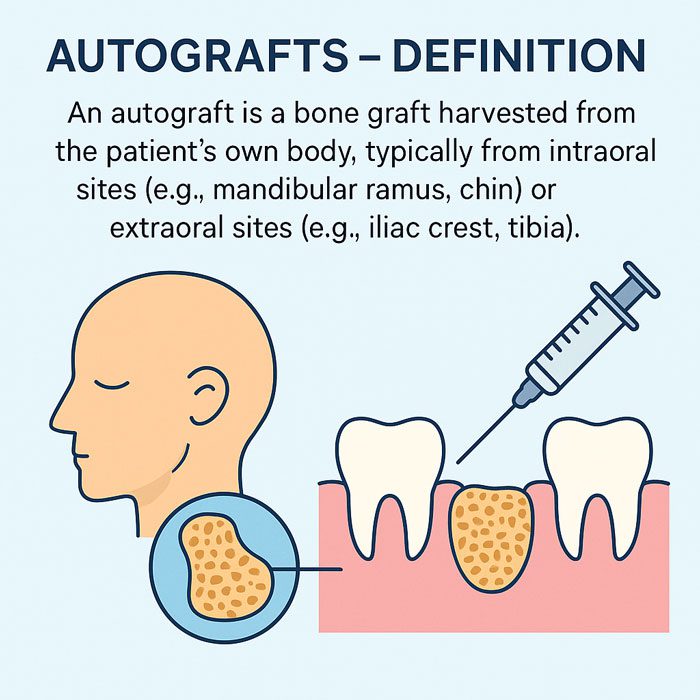
Allografts: Benefits and risks
Allografts present an alternative to autografts by utilizing bone harvested from deceased donors. Their availability enables quicker implementation of treatment, making them particularly beneficial in cases where time is of the essence.
One of the main benefits of allografts is that they do not carry donor site morbidity, allowing patients to avoid additional surgical risks associated with harvesting their own bone. Larger volumes of allograft material can also be utilized, which can be advantageous in extensive surgeries.
However, there are inherent risks, including the possibility of disease transmission despite rigorous screening processes. The patient’s immune system may also reject the allograft, leading to complications in bone integration. Variability in bone quality among different donors can further complicate their use.
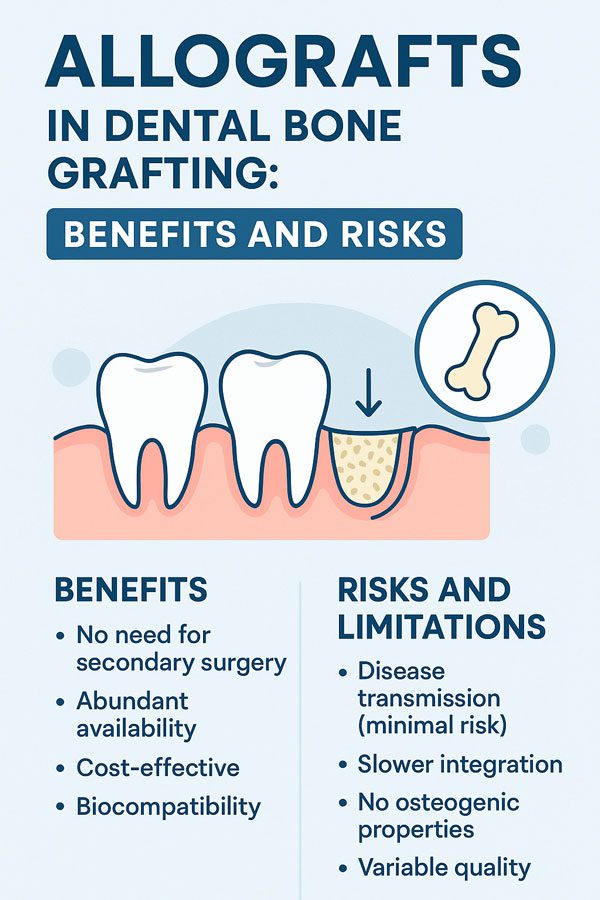
Synthetic bone grafts: Overview and uses
Synthetic bone grafts have gained popularity as a viable alternative to natural grafts. They are crafted from biocompatible materials designed to support bone regeneration while eliminating the risks associated with disease transmission or immune rejection.
These materials come in various forms, each offering unique properties concerning biodegradability and handling characteristics. Synthetic grafts can effectively fill bone defects, making them suitable for numerous applications, including spinal fusion and trauma surgery.
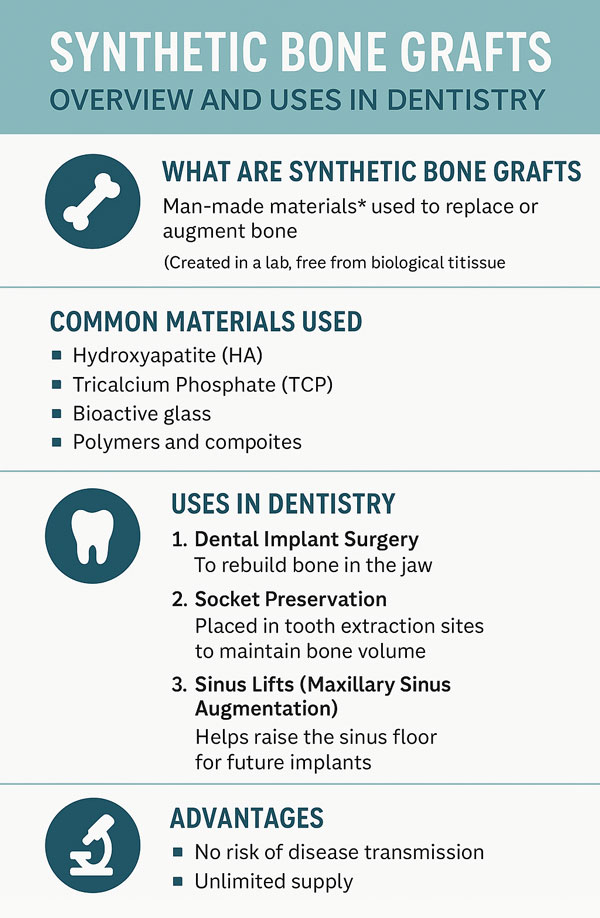
Their versatility makes synthetic grafts particularly appealing when autografts or allografts are impractical or unavailable. As ongoing research continues to innovate synthetic materials, their use in clinical settings is likely to expand, offering exciting possibilities for future treatments.
Dental implants and bone grafting
As the field of dental medicine evolves, the connection between bone health and successful dental implants cannot be overstated. Understanding this relationship helps elucidate why bone grafting is often a precursor to implant placement.
Here is our bone graft and sinus lift price list at Saigon Dental Implants Center:
| BONE GRAFT, SINUS LIFT | DENTAL IMPLANTS COST (USD) |
DISCOUNT PRICE (USD) |
| Bone graft | 200 – 320 | |
| Sinus lifting | 320 – 520 |
Connection between dental implants and bone health
Dental implants serve as artificial roots that are surgically anchored into the jawbone, providing a stable foundation for replacement teeth. However, the success of dental implants hinges on the condition of the surrounding bone. Adequate bone density and volume are essential for maintaining the implant’s position and preventing failure.
In scenarios where significant bone loss has occurred—due to periodontal disease, prolonged tooth loss, or trauma—the structural integrity of the jaw may be compromised. This highlights the importance of assessing bone quality prior to implant placement, as insufficient bone can lead to complications.
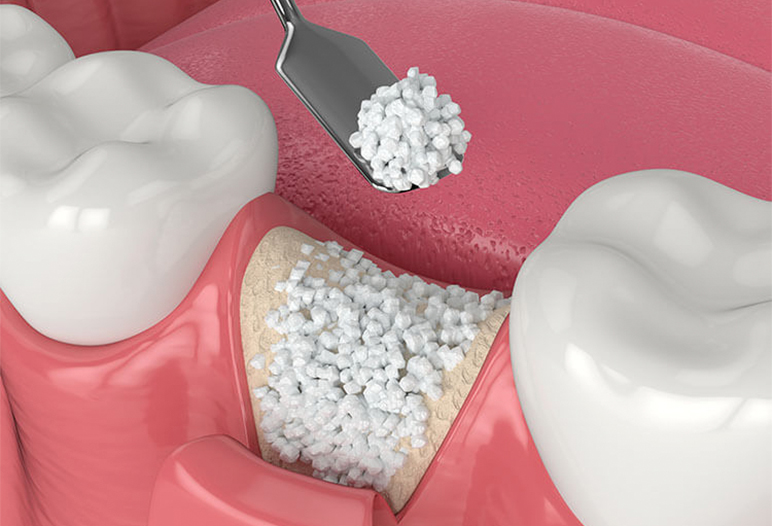
Role of bone grafting in successful implant placement
When patients exhibit inadequate bone density, bone grafting becomes a vital step in the implant process. By augmenting the bone volume, grafting procedures create a favorable environment for implant integration.
This augmentation can be achieved through various grafting techniques, such as socket preservation after tooth extraction or vertical/horizontal ridge augmentation. Ultimately, the goal is to ensure that the bone can adequately support the implant, enhancing the likelihood of long-term success.
Patients must be aware that the need for bone grafting before dental implants can influence the overall treatment timeline, and therefore should discuss the potential dental bone graft cost with their healthcare provider.
Factors influencing the success of dental implants
Several factors contribute to the success of dental implants, with bone quality being paramount. Adequate bone density, along with proper alignment and positioning of the implant, are critical considerations.
Additionally, the patient’s overall health, including systemic conditions like diabetes or osteoporosis, can significantly influence healing and integration. Personal habits, such as smoking and oral hygiene practices, also play a substantial role in determining the success rate of implants.
Regular follow-up appointments are necessary to monitor the healing process and ensure that the implant integrates successfully into the grafted bone.
Complications and considerations
While bone grafting carries numerous benefits, it is essential to acknowledge the potential risks and challenges associated with these procedures. This awareness helps patients make informed choices and prepares them for possible outcomes.
Potential risks associated with bone grafting
As with any surgical procedure, bone grafting is accompanied by certain risks. Infection at the surgical site is a common concern, as is the possibility of delayed healing. Other complications may include graft rejection, adverse reactions to anesthetics, and complications stemming from the donor site if autografts are utilized.
Patients should communicate openly with their healthcare providers about any concerns or questions they may have regarding these risks. A thorough understanding of the potential complications empowers patients to take proactive measures in their recovery journey.
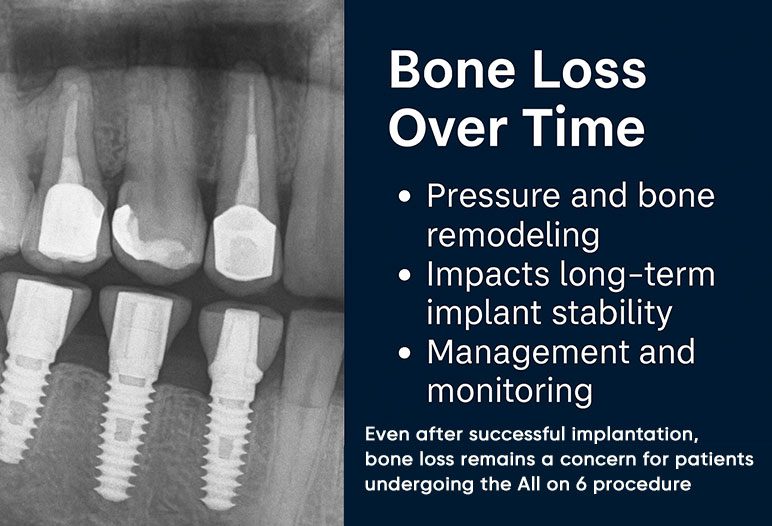
Common challenges in bone grafting procedures
Surgeons may encounter various challenges during bone grafting, including difficulty obtaining sufficient graft material, managing complex anatomical considerations, or ensuring adequate blood supply to the grafted site. Navigating these issues can require advanced surgical techniques and expertise.
Patient-specific factors, such as pre-existing medical conditions or lifestyle choices, may also pose challenges during the procedure and recovery. Surgeons must evaluate these factors to optimize outcomes and minimize complications.
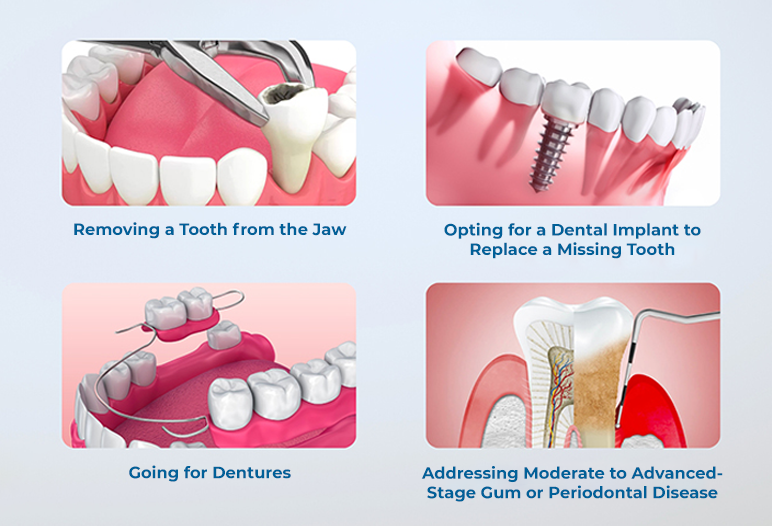
Long-term outcomes and monitoring
Long-term outcomes of bone grafting hinge on several factors, including the type of graft used, the skill of the surgeon, and the patient’s adherence to post-operative care protocols. Routine follow-ups are crucial to ensure proper healing and to address any emerging concerns.
By monitoring the graft’s integration over time, healthcare providers can intervene promptly in case of complications. Ongoing research into optimizing bone graft techniques and materials holds promise for improving long-term outcomes and enhancing the overall success rates of these procedures.
Conclusion
In summary, the interplay between bone graft and implant is integral to modern surgical practices, particularly in dentistry. As patients consider their options, understanding the various types of bone grafts, their implications, and the associated costs—including dental implants with bone loss cost, sinus lift cost, and bone graft cost—is essential for informed decision-making.
Effective communication with healthcare providers ensures that patients embark on a comprehensive pathway towards achieving optimal oral health. Each step in the bone grafting and implant placement process is designed to restore function and improve quality of life, illustrating the importance of these interconnected procedures in contemporary medicine.

 Google Reviews
Google Reviews Call
Call
SAIGON IMPLANT CENTER
Best dentist in Vietnam
Saigon Implant Center - Dental Clinic utilizes the latest technology for specialized treatment in the field of Single implant, full jaw implants, All on 4 implants, All on 6 implants, Zygoma implant....
SAIGON IMPLANT CENTER
Best dentist in Vietnam
Saigon Implant Center - Dental Clinic utilizes the latest technology for specialized treatment in the field of Single implant, full jaw implants, All on 4 implants, All on 6 implants, Zygoma implant....